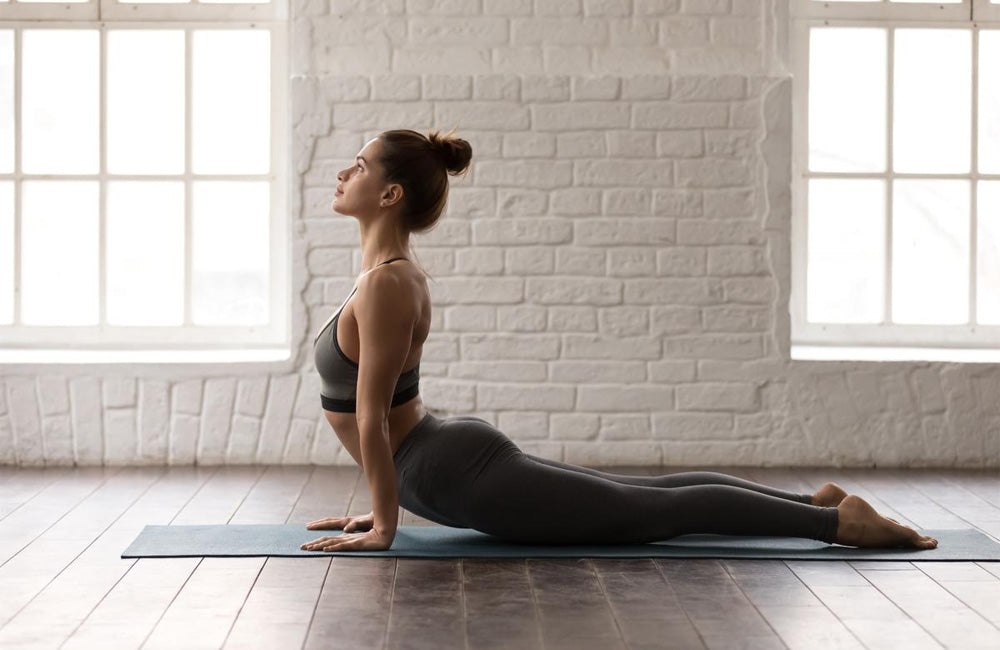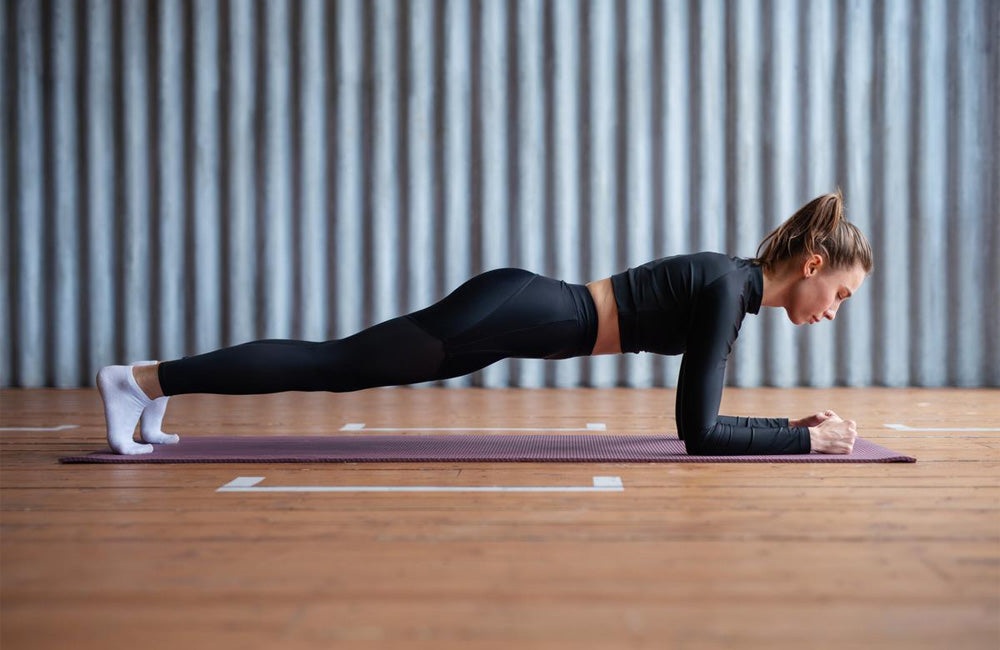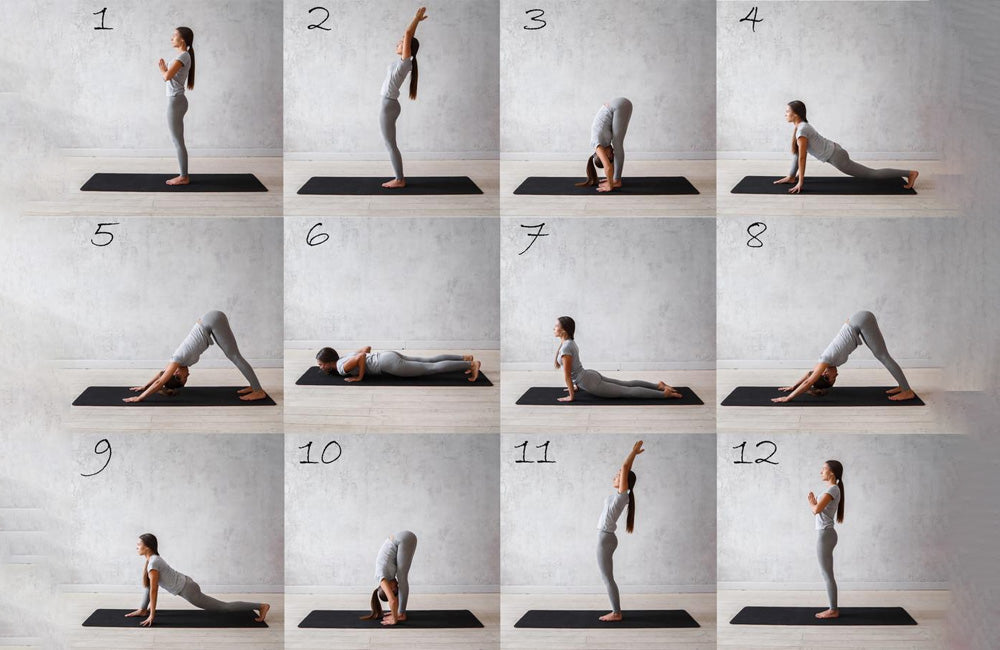Are you looking for yoga poses for helping manage diabetes? You've come to the right place! In this article, we'll explore the top 13 yoga postures for diabetes, complete with pictures and detailed instructions.
Doctors commonly advise yoga as a beneficial adjunct method for managing diabetes symptoms, particularly in type 2 diabetes cases. Although it cannot cure type 1 diabetes, yoga asanas directly stimulate the pancreas and simultaneously reduce stress levels, leading to decreased blood sugar levels and fewer associated complications. Additionally, yoga's relaxation techniques help lower cortisol, a stress hormone, which has a positive impact on blood pressure and blood sugar levels.
Along with a good diet and exercise routine, lifestyle adjustments are necessary for diabetes management. Studies have shown that yoga can reduce your risk of developing diabetes. (Ref)
Let's see the yoga poses for diabetes.
Best Yoga Poses for Diabetes:
Yoga is, therefore, more than just an exercise, it is something your body needs to advance to a better quality of life. If you're looking to incorporate yoga for diabetes management, here are 13 highly effective yoga asanas to consider. Let’s see each one with its benefits.
1. Viparita Karani (Legs Up the Wall Pose):
Have you tried the Legs Up The Wall Pose, also called Viparita Karani, in your yoga practice? This gentle pose involves lying on your back with your legs extended upward against a wall. It only takes a few minutes a day and can leave you feeling refreshed and rejuvenated. Practicing this pose can help you relax and reduce stress levels, as well as relieve headaches and boost your energy. This Yoga targets the legs, hips, and lower back muscles.

How To Do Viparita Karani Yoga Asana?
- Place a mat on the ground and sit down.
- Your legs should be raised at a 90-degree angle while you are lying flat with your back touching the ground. Beginners can use a wall as support until they are able to try this on their own.
- Your arms should be stretched out to the side with your palms facing up while you unwind your body's muscles.
- After holding the position for five to ten minutes, carefully relax by bringing your legs down.
Best Time To Do Viparita Karani:
The best time to practice Yoga for diabetes is in the evening or before bedtime. It promotes relaxation and can alleviate insomnia or restlessness.
Viparita Karani Benefits:
This pose is famous for multiple benefits, including- easing lower back pain and headaches, reducing stress and anxiety, improving circulation, relieving menstrual cramps, and reducing inflammation.
2. Bhujangasana (Cobra Stretch):
Bhujangasana, also known as the Cobra Stretch, is an easy yoga pose that extends and strengthens the back, shoulders, and abdomen. Additionally, this position stimulates the reproductive and digestive system.

How To Do Bhujangasana?
- Begin lying face down on your mat with your hands under your shoulders, palms down, and elbows close to your body.
- Press your feet and thighs firmly into the floor, engaging your leg muscles.
- Inhale as you slowly lift your head, chest, and shoulders off the ground, keeping your elbows close to your body.
- Hold the pose for a few breaths, ensuring your shoulders remain relaxed and away from your ears.
Best Time To Do Bhujangasana:
It is preferable to practice this yoga for diabetes management in the morning on an empty stomach.
Bhujangasana Benefits:
This pose, known as the Cobra stretch or Bhujangasana, offers a range of benefits that contribute to overall well-being. It helps reduce stress and fatigue, enhances the strength of the spine, arms, and shoulders, and improves posture and alignment. Additionally, it provides a gentle stretch to the chest, abdomen, and hips, promoting flexibility and a sense of rejuvenation.
3. Samasthiti (Mountain Pose):
Samasthiti, also known as Mountain Pose, is a fundamental yoga posture that can benefit those with diabetes. It involves standing with your feet hip-width apart and your arms at your sides, focusing on aligning and grounding your body. Consistent practice of this pose can promote stability and grounding in both your body and mind, enhance concentration, and improve your overall posture.

How To Do Samasthiti?
- Begin by standing with your feet parallel.
- Slowly lift your toes and heels of your feet, then place them back on the ground.
- Repeat this movement several times.
- Additionally, push your chest upwards and slowly bring your shoulders towards and then away from each other.
- Repeat this for 5times at least.
Best Time To Do Mountain Pose:
The best time to do this posture is before starting your yoga, it helps to focus and concentrate.
Mountain Pose Benefits:
The Samasthiti pose is commonly used as a foundation for other yoga poses and is thought to have many benefits, such as improving posture and balance, increasing body awareness, reducing anxiety and stress, and strengthening the legs and core.
4. Adho Mukha Svanasana (Downward):
The Downward-facing Dog Pose in yoga can enhance blood circulation and improve insulin sensitivity, making it beneficial for those with diabetes. Begin on hands and knees and lift your hips to form an inverted V-shape. This pose can also increase muscular strength and core stability, lower blood pressure, and improve overall circulation.

How To Do Adho Mukha Svanasana?
- Start on your hands and knees. Place your hands in front of your shoulders extend your palms and place them flat on the ground.
- Push your body backward so that your toes touch the ground.
- Continue pushing back as much as you can, trying to touch your heels to the ground while keeping your palms in place.
- Take 10 deep breaths in this stretched position.
Best Time To Do Adho Mukha Svanasana:
The morning is the greatest time to do this yoga for managing diabetes.
Adho Mukha Svanasana Benefits:
This pose offers a range of benefits, such as enhancing digestion and circulation, stretching the hamstrings and calves, strengthening the arms and shoulders, and promoting overall body awareness. It's a versatile and accessible exercise that can contribute to both physical and mental well-being.
5. Phalakasana (Plank Pose):
The Plank Pose, or Phalakasana, is a demanding yoga pose, especially beneficial for managing diabetes. Regular practice of the Plank Pose not only establishes a solid foundation for advanced yoga postures but also enhances overall physical fitness.

Best Time To Do Plank Pose
This pose should be practiced in the morning or right before a workout. Plank Pose practice on a regular basis might help shield your back from harm.
Phalakasana Benefits:
This pose offers a multitude of benefits, including a metabolism and digestion boost, increased strength in the arms, shoulders, and core, improved posture and balance, heightened body awareness, and relief from back pain and tension. It's a versatile yoga posture that can contribute to both physical well-being and mindfulness.
6. Urdhva Mukha Svanasana (Upward Facing Dog Pose):
Upward-Facing Dog Pose, or Urdhva Mukha Svanasana, is a yoga posture that enhances upper body strength, stretches the chest and abdomen, and promotes better posture.

How To Do Urdhva Mukha Svanasana?
- Begin by lying flat on your belly, legs extended, and the tops of your feet touching the floor.
- Place your palms on the mat beside your ribcage, fingers pointing forward.
- Inhale, press into your palms, and raise your head, chest, and upper body off the mat, straightening your arms.
- Relax, move your shoulders away from your ears, gently arch your back, and lift your gaze towards the ceiling.
- Hold briefly, then release back to the mat. Repeat 5-10 times for a complete practice.
Best Time To Do Urdhva Mukha Svanasana
Performing this pose in the morning can energize the body and enhance posture.
Urdhva Mukha Svanasana Benefits:
The upward-facing Dog Pose offers a range of benefits such as stretching the chest, abdomen, and spine, which improves posture and balance. It also strengthens the arms, shoulders, and wrists, while stimulating the nervous system for enhanced overall well-being.
7. Balasana (Child’s Pose):
This reclining position increases relaxation, which may support the growth of beta cells that produce insulin. Additionally, it might aid in reducing anxiety, fatigue, and back and neck problems.

How To Do Balasana?
- Start by kneeling on the floor with your knees slightly wider than hip-width apart.
- Sit back on your heels, gently touching your buttocks to your heels.
- Extend your arms forward and lower your chest towards your thighs, allowing your forehead to rest on the ground.
- Maintain this position and breathe deeply for up to 2 minutes, elongating your spine and relaxing your entire body.
Best Time To Do Balasana:
This child pose also called Balasana, can be practiced at any time of the day.
Balasana Benefits:
This asana, perfect for managing diabetes, has several health benefits, including stress relief, stretching different muscle groups, lowering tension, improving digestion and circulation, and inducing a profound sensation of relaxation.
8. Supta Matsyendrasana (Supine Spinal Twist):
A relaxing yoga pose is called Supta Matsyendrasana, or Supine Spinal Twist. targeting the inner thighs, hips, and spine. This restorative twisting pose not only stimulates the abdominal organs, potentially aiding in the reduction of blood sugar levels, but it also offers relief from discomfort and stiffness in the spine, back, and hips.

How to Do Supta Matsyendrasana?
- Lay flat on your back with your hands facing down and your knees drawn in toward your chest.
- Keep your knees parallel to your hips as you slowly move them to the left. To stretch your muscles as much as possible, keep your gaze fixed to the right.
- Repeat on the opposite side after holding for 30 seconds.
Best Time To Do Supta Matsyendrasana
It is best to perform this pose in the morning to wake up and energize the body, or in the evening to relax and release tension.
Supta Matsyendrasana Benefits:
Supta Matsyendrasana offers a range of benefits, such as relief from lower back discomfort, improved digestion, enhanced hip and spine flexibility, and a calming effect on both the mind and body.
9. Dhanurasana (Bow Pose):
This backbend posture not only expands the chest but also activates the abdominal organs, potentially aiding in blood sugar regulation and alleviating issues like constipation and respiratory ailments.

How To Do Dhanurasana?
- Lay on your stomach with your arms at your sides.
- Bring your arms to touch your ankles after bending your knees towards your buttocks.
- As you do this, raise your chest and head.
- Stay for up to 30 seconds, then release.
Best Time To Do Dhanurasana:
Engaging in this yoga routine for diabetes patients is most effective in the morning, as it enhances both energy levels and posture.
Dhanurasana Benefits:
Dhanurasana, also known as Bow Pose, has a number of advantages, including improving posture and balance, stimulating the digestive system, stretching the entire front body, and strengthening the back muscles.
10. Paschimottanasana (Seated Forward Bend):
Paschimottanasana, the Seated Forward Bend, aids in diabetes management. Sit, extend your legs, and reach for your feet, gently folding over your legs. Regular practice promotes relaxation, aids in weight control, and relieves anxiety, fatigue, and headaches, benefiting your overall health.

How To Do Paschimottanasana?
- Sit with your legs extended straight in front of you.
- Flex your toes toward your shins.
- Hinge forward at your hips, lengthening your spine
- Gradually reach your hands toward your feet, going as far as is comfortable, and gently tuck your chin towards your chest. Hold this position for 3 minutes.
Best Time To Do Paschimottanasana:
Paschimottanasana is effective in the morning or evening for tension release and can aid diabetes management by improving circulation and blood sugar control.
Paschimottanasana Benefits:
This diabetes-controlling yoga practice offers a range of advantages, such as promoting digestive system stimulation, fostering mental calmness with reduced anxiety, and enhancing flexibility in both the hamstrings and hips.
11. Setu Bandha Sarvangasana (Bridge Pose):
Setu Bandha Sarvangasana, the Bridge Pose, involves lying on your back, bending your knees, and lifting your hips while anchoring your feet and arms to the floor. Regular practice of this pose promotes relaxation, stress reduction, and effective back stretching, providing relief from lower back pain and easing the effects of stress on both body and mind.

How To Do Setu Bandha Sarvangasana?
- Begin by lying on your back with your knees bent.
- Slide your feet closer to your buttocks and lift your hips from the pubic bone region.
- Position your hands under your back for support and press down on your heels while maintaining parallel thighs.
- Hold this pose for about 1 minute or as comfortable.
Best Time To Do Setu Bandha Sarvangasana:
Bridge Pose is best performed in the morning or evening.
Bridge Pose Benefits:
This diabetes-friendly yoga pose offers a range of benefits, including stretching the chest, neck, and spine, strengthening the back muscles, enhancing digestion and circulation, alleviating anxiety and depression, and stimulating the thyroid gland for overall well-being.
12. Surya Namaskar (Sun Salutation):
One of the greatest asanas for diabetes, it includes 12 postures carried out in a smooth, continuous sequence. Regular Sun Salutation practice can boost your vitality and general physical and mental well-being.

How To Do Sun Salutation?
- Begin by standing at the front of your mat with your palms together and your abdomen engaged.
- Inhale, raising your arms while stretching them backward.
- Exhale and slowly bend forward, keeping your spine elongated and your gaze downward.
- Inhale, step your right leg back, ensuring your left knee forms a 90° angle, and place your palms flat on the floor while looking straight ahead.
- Hold your breath briefly, then exhale as you bring your left leg back, coming into a plank position with your body in a straight line.
- Exhale, lowering your knees, chest, and chin to the floor.
- Inhale, lifting your upper body while looking upward, then exhale as you lift your hips into an inverted V shape, with heels and palms on the floor.
- Inhale, step your right leg forward, then bring your left leg forward, and exhale as you bend down to touch your toes.
- Place your palms on the floor and stretch, then inhale as you raise your arms while stretching your back.
- Exhale and bring your palms together.
- Repeat the sequence, this time starting with your left leg back.
It is recommended to perform 2-3 sets of sun salutations each day.
Best Time To Do Sun Salutation:
The best time to perform this Yoga to prevent diabetes is early morning on an empty stomach, as it helps to awaken and energize the body, improve digestion, and reduce stress.
Sun Salutation Benefits:
The Sun Salutation, also known as Surya Namaskar, has a number of benefits, including the stimulation of the respiratory and digestive systems, efficient muscle and joint warm-up, increased circulation and flexibility, and improved general body awareness and concentration.
13. Shavasana (Corpse Pose):
Corpse Pose, or Shavasana, is a diabetes-friendly yoga posture. Lie on your back, arms and legs extended, to relax the body. Daily practice reduces stress, enhances well-being, and improves focus. Often used to conclude a yoga routine, it promotes relaxation and mental calmness.

How To Do Shavasana?
- Lie flat on your back with your legs spread apart.
- Keep your arms by your sides, palms facing up, forming a Y shape with your body.
- Fully relax and release tension while focusing on your breath.
- Stay in this position for up to 5 minutes.
Best Time To Do Shavasana:
Shavasana is ideal at the end of a yoga session or whenever relaxation and stress relief are needed.
Shavasana Benefits:
Shavasana, also known as Corpse Pose, provides a multitude of advantages. It calms the mind, reduces mental fatigue, enhances sleep quality, and alleviates stress and anxiety. Furthermore, a deep sense of relaxation and rejuvenation, makes it a valuable practice for overall well-being.
Now, you may easily understand how yoga can help with diabetes management by doing these positions. If you currently have this medical condition, learning the technique and practice of yoga will enable you to significantly lessen the symptoms & medications. With a trainer's assistance, you can begin with as little as two or three days per week and then build up as your body requires.
FAQs:
1. How Does Yoga Effect Diabetes?
A) Yoga involves stretching and engaging muscles, promoting both physical and mental relaxation. Additionally, It encourages the alignment of internal abdominal organs, which can assist in regulating blood sugar levels.
2. Does Yoga Help in Balancing Blood Sugar Levels Permanently?
A) Yes, The long-term regulation of blood sugar levels can benefit from yoga. Specific yoga poses are recognized for their ability to lower glucose levels and support diabetes management. Consistent yoga practice, ranging from 30 minutes to an hour, can have a significant and lasting impact on blood sugar control, reducing the risk of related complications.
3. What is the Recommended Duration of Yoga Practice for Effectively Managing Diabetes?
A) Yoga should be practised for at least 30 min to 1 hour per day in order to effectively help with diabetes management. There are no strict rules dictating how long you must practise yoga, though. Yoga is good for your whole physical and mental health if you do it regularly. As long as yoga continues to benefit you, you can include it in your life forever.
Also Read the Articles:
- Top 16 Exercises for Weight Loss at Home and Gym
- How Apple Cider Vinegar Helps in Weight Loss?
- How Stress Affects Blood Sugar Levels in Diabetics?
- Diabetes Mellitus vs Diabetes Insipidus
| *** This Article is Written by Swetha Ramala, MSc. in Food, Nutrition & Dietetics. |








